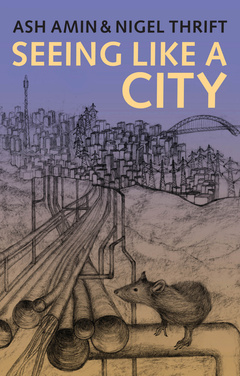Description
Seeing Like a City
Authors: Amin Ash, Thrift Nigel
Language: English
Keywords
urban; urban studies; sociology; geography; politics; infrastructure
Publication date: 12-2016
216 p. · 14.5x21.8 cm · Hardback
Publication date: 12-2016
216 p. · 13.7x21.3 cm · Paperback
Description
/li>Contents
/li>Biography
/li>
Seeing like a city means recognizing that cities are living things made up of a tangle of networks, built up from the agency of countless actors. Cities must not be considered as expressions of larger paradigms or sites of human effort and organization alone. Within their density, size and sprawl can be found a world of symbols, bodies, buildings, technologies and infrastructures. It is the machine-like combination, interaction and confrontation of these different elements that make a city.
Such a view locates urban outcomes and influences in the character of these networks, which together power urban life, allocating resources, shaping social opportunities, maintaining order and simply enabling life. More than the silent stage on which other powers perform, such networks represent the essence of the city. They also form an important political project, a politics of small interventions with large effects. The increasing evidence for an Anthropocene bears out the way in which humanity has stamped its footprint on the planet by constructing urban forms that act as systems for directing life in ways that create both immense power and immense constraint.
Acknowledgements vii
Prologue 1
1 Looking through the City 9
2 Shifting the Beginning: The Anthropocene 33
3 How Cities Think 67
4 The Matter of Economy 99
5 Frames of Poverty 125
Epilogue 159
Notes 168
References 171
Index 190
Nigel Thrift is a former Vice-Chancellor of the University of Warwick




